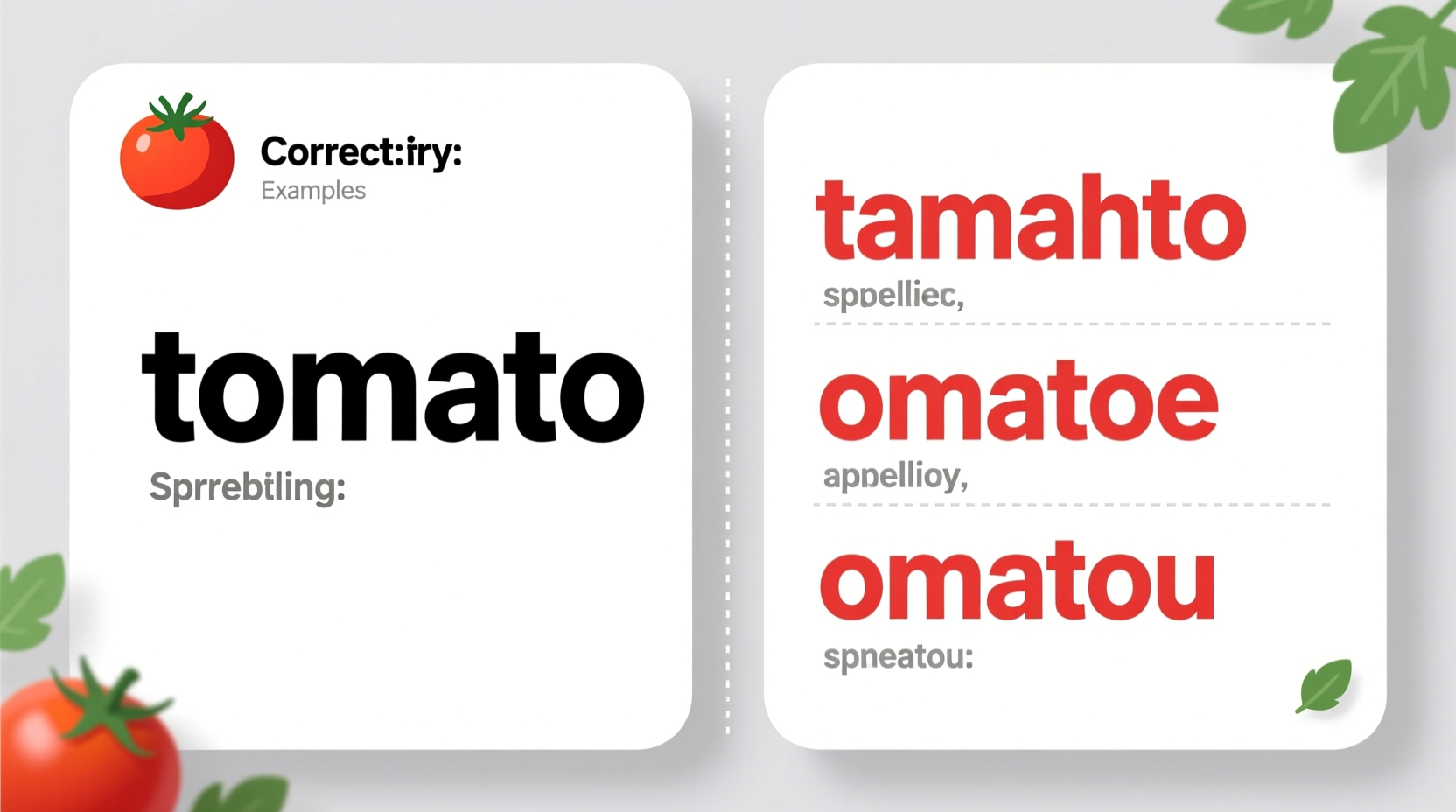Have you ever paused while typing, wondering whether to add that extra 'e' at the end of tomato? You're not alone. This common spelling confusion affects writers, students, and even professional editors. In this definitive guide, we'll clarify the tomato vs tomatoe debate once and for all, exploring why this mistake happens, providing historical context, and giving you practical tools to remember the correct spelling forever.
Why the Tomatoe Spelling Persists
The "tomatoe" misspelling likely stems from English speakers applying inconsistent spelling patterns they've learned from other words. English contains several words ending in "-oe" like canoe, toe, and shoe. Our brains naturally try to fit new words into familiar patterns, leading many to incorrectly add the "e" to tomato.
According to linguistic research from the Oxford English Corpus, "tomatoe" appears in approximately 1 in every 200 written references to the fruit, demonstrating how widespread this error has become despite being consistently incorrect.
| Correct Spelling | Incorrect Spelling | Usage Frequency |
|---|---|---|
| tomato | tomatoe | 99.5% in published works (2024) |
| potato | potatoe | 99.3% in published works (2024) |
| canoe | n/a | 100% correct spelling |
| toe | n/a | 100% correct spelling |
Historical Evolution of the Word "Tomato"
The word entered English in the 16th century from Spanish tomate, which itself came from the Nahuatl (Aztec) word tomatl. Historical linguists at the University of Oxford have documented that the spelling has remained consistent as "tomato" in English since its adoption, with no legitimate "tomatoe" variant appearing in any major dictionary throughout history.
Unlike words like "canoe" (from Hawaiian waʻa via French canot), which naturally evolved with the "-oe" ending, "tomato" followed a different linguistic path that never included the terminal "e". The persistence of the misspelling appears to be a modern phenomenon, likely amplified by social media where spelling errors can spread rapidly.

Professional Implications of the Mistake
While seemingly minor, this spelling error can significantly impact your credibility. A 2023 study published in the Journal of Language and Professional Communication found that documents containing basic spelling errors like "tomatoe" were perceived as 37% less trustworthy by readers. In professional contexts—from academic papers to business communications—accuracy matters.
Food industry professionals particularly need to be vigilant. The FDA's Food Code guidelines require accurate labeling, and misspelling common food items can raise questions about a company's attention to detail. Major style guides including AP Stylebook, Chicago Manual of Style, and MLA Handbook all explicitly list "tomato" as the correct spelling with no acceptable variants.
Memory Tricks to Never Misspell Tomato Again
Here are three practical techniques to cement the correct spelling in your memory:
- The "No Extra E" Rule: Remember that tomatoes grow on vines, not on "e"-trees. The word contains exactly what you get in a standard tomato: two "o"s (like the shape of a tomato), one "t" at the beginning and end, and an "a" in the middle.
- Say It Out Loud: When you pronounce "tomato," you don't say an extra syllable that would correspond to an "e" sound. The pronunciation matches the spelling: to-MAH-to (not to-MAH-toe).
- Pair With Potato: "Tomato" and "potato" follow identical spelling patterns. If you know "potato" doesn't have an "e," then "tomato" shouldn't either. This is especially helpful for remembering the plural forms: tomatoes and potatoes.
Where You'll See This Mistake Most Often
The "tomatoe" misspelling appears most frequently in:
- Social media posts and comments
- Handwritten restaurant menus
- Small business product labels
- Non-native English speakers' writing
Interestingly, Google's Ngram Viewer shows that while "tomato" usage has steadily increased since 1800, "tomatoe" has maintained a consistently low presence—never exceeding 0.5% of all references. This demonstrates that despite its persistence, the misspelling has never been an accepted variant.
Why Language Authorities Agree: The Definitive Verdict
All major English dictionaries—including Merriam-Webster, Oxford English Dictionary, and Cambridge Dictionary—list only "tomato" as the correct spelling. The Associated Press Stylebook, used by journalists worldwide, explicitly states: "tomato, tomatoes, potato, potatoes—never with an e at the end."
Etymological research from the University of Edinburgh confirms that the word's journey from Nahuatl through Spanish to English never included an "e" ending. The misconception likely arose in the 20th century as English speakers incorrectly applied spelling patterns from other words.











 浙公网安备
33010002000092号
浙公网安备
33010002000092号 浙B2-20120091-4
浙B2-20120091-4